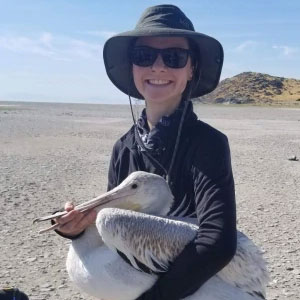Wilson’s phalaropes are small, salt-loving shorebirds that migrate thousands of miles between distant saline lakes in South America, and those in our own backyard, like Great Salt Lake. New research suggests phalarope populations are declining, and that their populations are tied to the health of these lakes.
Ryan Carle is the science director at nonprofit Oikonos Ecosystem Knowledge. He said saline lakes provide a crucial food source for phalaropes as they burn through their fat stores during spring and fall migration.
“Saline lakes…because many of them don't have fish, like Great Salt Lake doesn't have fish, they don't have competitors for all these invertebrates,” Carle explained. “So when the birds show up at saline lakes, they have abundant food to eat that is so abundant that…they hardly have to search for it because it's just full of flies and shrimp.”
Laguna Mar Chiquita, a large saline lake in Argentina, is strikingly similar to Great Salt Lake in size, ecology and history. Mar Chiquita’s phalarope numbers mirror that of Great Salt Lake, with both lakes hosting up to thirty-three percent of the global population. Like Great Salt Lake, Mar Chiquita is facing water level declines and habitat degradation, but Carle said its recent designation as a national park will help protect the lake.
“That was a really big, years-long effort by a lot of different entities to get it protected as a park. So on the bright side, despite these issues that it's facing, it now has a much higher level of protection, which will help it retain its water and its water quality,” Carle said.
Carle, like many other avian researchers, is extremely concerned about Great Salt Lake’s decline and its impact on phalarope and other shorebird populations.
“I'm very worried about Great Salt Lake in terms of its impact on vulnerable populations if it continues to go the way it's going…the situation is really grim,” Carle emphasized. “And I'm very worried about phalaropes because Great Salt Lake is the place for phalaropes.”

.jpg)

